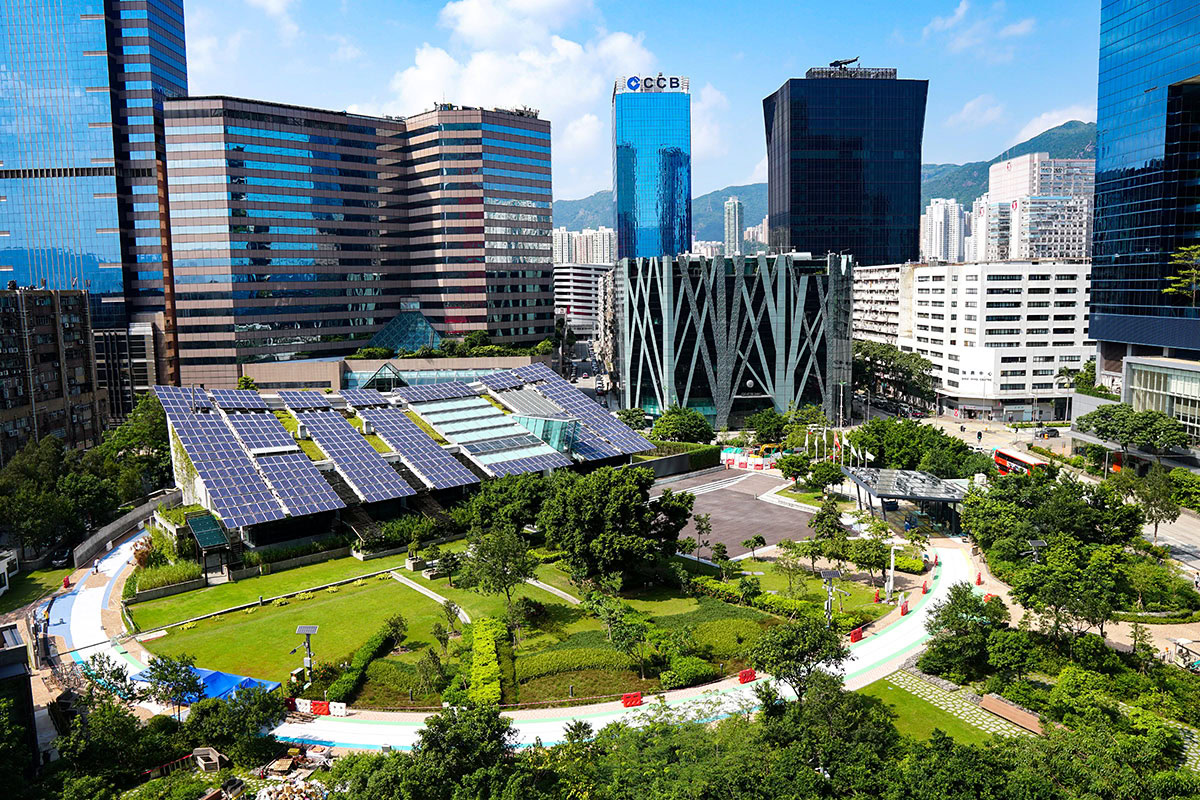Across the world, cities are expanding at record speed, but few regions face change as rapid as Africa. Urban populations are expected to triple by 2050, which means millions of new homes, offices, and public spaces must be built in the coming decades. Each project adds to the continent’s growing environmental footprint. The challenge is clear: how can African nations grow their cities without repeating the unsustainable building practices that harmed other regions?
That is where green building in Africa takes center stage. Green construction focuses on reducing waste, cutting energy use, and protecting the environment while still meeting human needs. As nations plan for new housing, schools, hospitals, and transport systems, sustainable building practices are becoming not only desirable but essential.
In this article, we explore what green building means, why it matters most to Africa’s future, and how governments and developers are integrating eco-friendly solutions into modern construction. Later, we will also highlight how private-sector leaders such as the Chagoury Group are contributing to sustainable design and infrastructure.
What Is Green Building and Eco-Friendly Construction?
Before exploring Africa’s progress in sustainable construction, it helps to define what green building truly means and how this approach is changing the way structures are designed, built, and maintained.
Understanding the Concept of Green Building
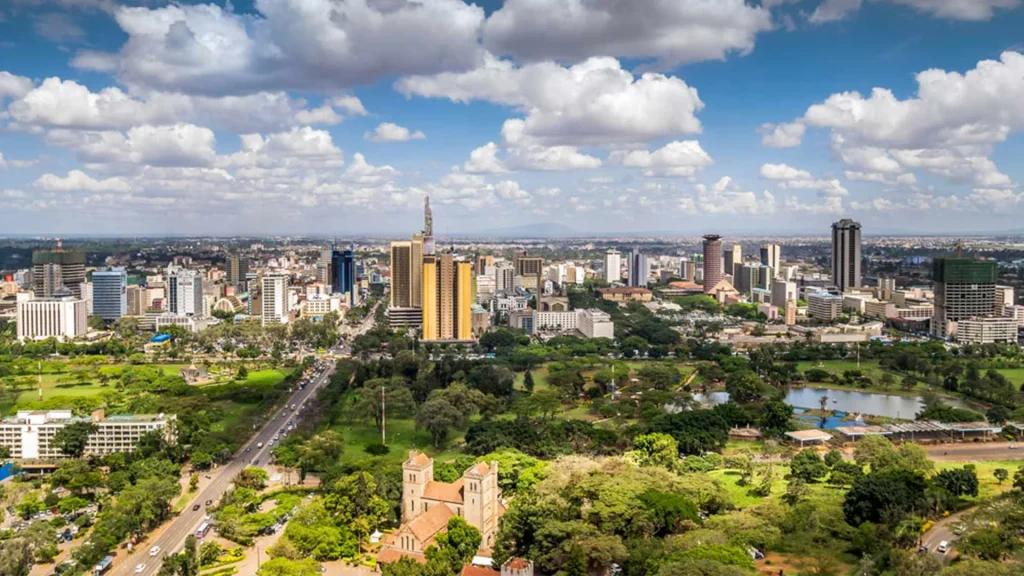
In simple terms, green building means designing, constructing, and operating buildings in ways that reduce environmental harm while improving comfort, efficiency, and health. It focuses on balancing growth with sustainability. Every step, from selecting materials to managing energy, aims to protect both people and the planet.
Across Africa, this approach is gaining attention as cities prepare for major expansion. Experts estimate that 80 percent of the buildings that will exist in 2050 in Africa have not yet been built (Alpin ME). This presents a once-in-a-generation chance to build smarter, greener, and more resilient cities.
Core Principles of Eco-Friendly Construction
A green building uses a combination of materials, design strategies, and technologies to reduce its carbon footprint and improve efficiency. The main principles include:
- Sustainable Materials
- Use of recycled steel, reclaimed wood, or locally produced bricks to reduce emissions from transport.
- Preference for low-embodied-carbon materials that require less energy to manufacture.
- Responsible sourcing practices that protect forests and ecosystems.
- Energy Efficiency
- Buildings are designed to capture natural light, improve insulation, and minimize cooling demand.
- Renewable systems such as solar panels and hybrid microgrids cut reliance on fossil fuels.
- Research shows that certified green buildings in South Africa use 30 to 40 percent less energy than standard buildings (ScienceDirect).
- Water and Waste Management
- Rainwater harvesting systems and greywater recycling reduce freshwater use.
- Efficient plumbing fixtures can lower water consumption by up to 50 percent.
- Construction waste is separated, reused, or recycled instead of going to landfills.
- Healthy Indoor Environments
- Proper ventilation, non-toxic paints, and abundant natural light support better air quality.
- Studies link sustainable buildings to higher productivity and reduced respiratory illness.
- Resilience and Adaptability
- Designs that withstand heatwaves, floods, and storms make buildings safer and longer-lasting.
- Materials such as compressed earth blocks and reflective roofing improve thermal performance.
Green Building Certifications and Standards
To ensure that sustainability claims are measurable, developers use certification systems like LEED, EDGE, EarthCheck, and Green Star Africa. These frameworks evaluate how buildings perform across key sustainability metrics, including energy, water, and materials use.
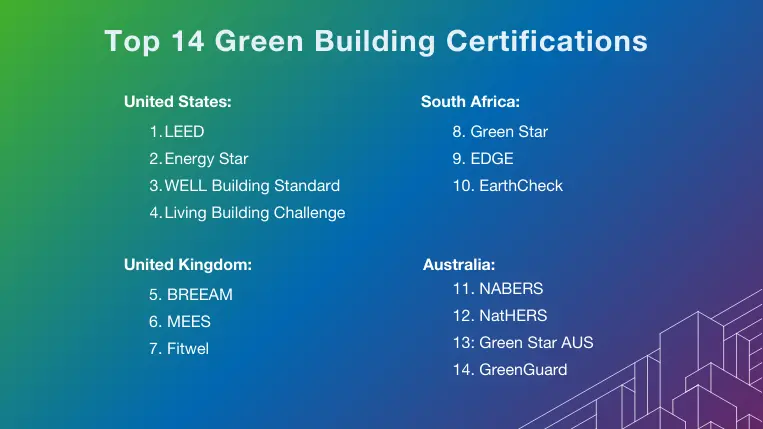
According to JLL, Africa now has over 1,000 certified green buildings, totaling more than 14 million square meters of eco-friendly space (JLL Report). Programs like EDGE are expanding quickly, with 8.8 million m² of certified projects across the continent (EDGE Buildings).
These certifications not only validate environmental performance but also help attract investors and tenants who value sustainability. They promote transparency and encourage developers to adopt measurable standards that improve long-term building performance.
Why It Matters
Green construction is transforming how cities in Africa grow. It creates cost-efficient, comfortable buildings that use fewer resources and provide better living conditions. The shift toward green building in Africa also positions the continent as a leader in sustainable development, setting an example for emerging economies worldwide.
Why Green Building Matters: Especially in Africa
Africa’s rapid development brings both opportunity and responsibility. To understand why sustainability is so crucial, we must first look at how urban expansion and construction trends are reshaping the environment across the continent.
Urban Growth and Environmental Pressure
Africa is experiencing one of the fastest urban growth rates in the world. The United Nations projects that the continent’s population will reach 2.5 billion by 2050, with nearly 60 percent living in cities. This surge will require millions of new homes, schools, and workplaces. If traditional construction methods continue, the environmental cost will be severe.
The construction sector already accounts for 39 percent of global carbon emissions (Alpin ME). As urban centers expand, so will the demand for cement, steel, energy, materials, and processes that release significant greenhouse gases. Transitioning toward sustainable methods is the only way to balance urban growth with environmental responsibility.
Economic and Social Opportunity
A green building is not only about reducing emissions. It also strengthens local economies and improves community well-being. The World Green Building Council highlights that the industry can create millions of new jobs through sustainable design, material production, and renewable energy systems (WorldGBC).
Key social and economic benefits include:
- Job creation: The green economy could generate 3.3 million jobs in Africa by 2030, including 1.7 million in solar energy (The Guardian).
- Healthier living environments: Efficient ventilation and non-toxic materials reduce illness and improve productivity.
- Lower operating costs: Energy-efficient buildings cut power bills by up to 40 percent.
- Attractive investments: Certified sustainable properties draw long-term investors seeking ESG-compliant portfolios.
These benefits show that green building in Africa is a practical development model, not a luxury. It helps create inclusive growth while preserving natural resources for future generations.
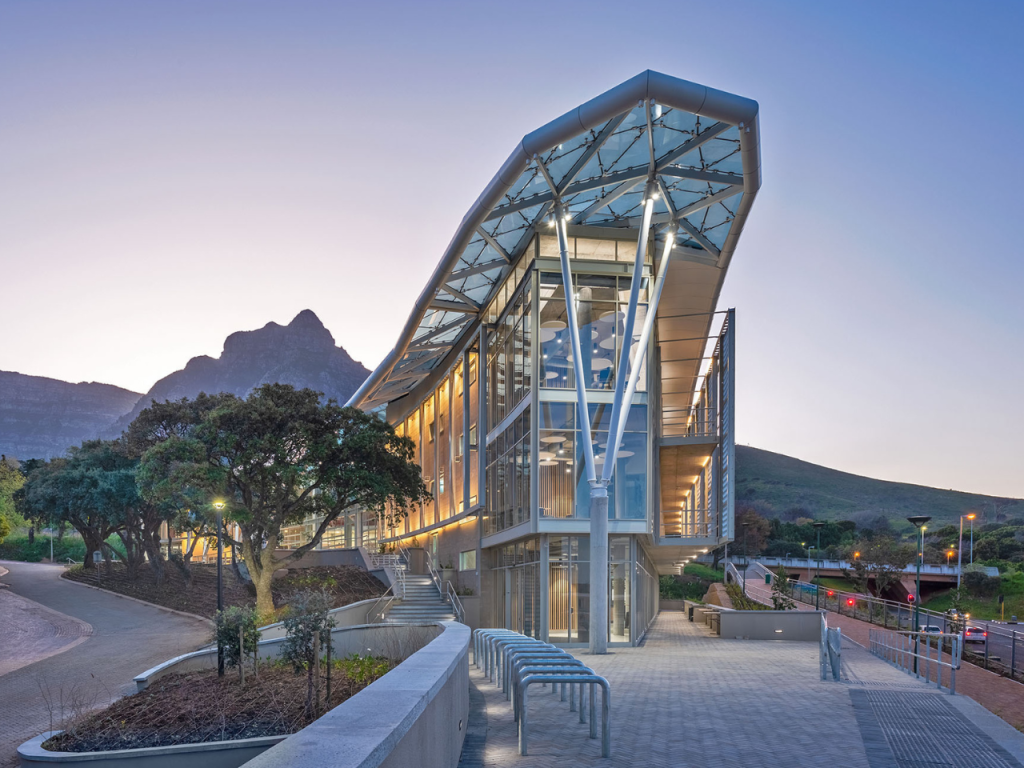
The “Blank Slate” Advantage
Unlike older economies that must retrofit existing infrastructure, many African nations are building cities from the ground up. According to African Business, more than 70 percent of Africa’s 2050 urban infrastructure has yet to be constructed (African Business). This allows countries to embed sustainability into design codes from the beginning.
New cities and housing projects can integrate:
- Renewable power sources like solar microgrids
- Sustainable water systems and waste treatment
- Resilient construction to withstand heat, flooding, and storms
By planning sustainably now, African countries can save billions in retrofitting costs later. Green construction is not just the future; it is the smartest investment of today.
Key Components and Best Practices of Green Building
To make sustainable cities a reality, developers must focus on the essential building blocks of green design. Each component, from materials to energy systems, plays a key role in shaping a project’s environmental footprint and long-term efficiency.
Sustainable Building Materials
Choosing eco-friendly materials is the foundation of green design. Builders are moving toward options that reduce embodied carbon and last longer. Common sustainable materials include:
- Recycled concrete and steel to minimize waste
- Locally sourced bricks and bamboo that cut transport emissions
- Low-VOC paints and sealants for better air quality
- Sustainably harvested timber certified by environmental agencies
The green building materials market in the Middle East and Africa was valued at USD 16.7 billion in 2024, with a projected 9.9 percent annual growth rate through 2030 (Grand View Research).
Energy Efficiency and Smart Design
Energy efficiency is a defining feature of sustainable construction. Buildings designed with passive cooling and daylighting can dramatically reduce power needs.
Best practices include:
- Positioning windows and walls for optimal shade and ventilation
- Installing solar photovoltaic panels for clean electricity
- Using LED lighting and motion sensors for lower consumption
- Upgrading insulation and glazing to reduce cooling loads
Certified green buildings in South Africa use 30 to 40 percent less energy than conventional designs (ScienceDirect). These savings prove that efficiency and comfort can coexist.
Water and Waste Management
With many African regions facing water scarcity, efficient water systems are essential.
Sustainable buildings often include:
- Rainwater harvesting systems to collect and store water for reuse
- Greywater recycling for irrigation and sanitation
- Smart meters that monitor water use in real time
Construction waste is also reduced through strict site management. Materials are sorted for reuse, and surplus supplies are returned to manufacturers instead of landfills.
Healthy Indoor Environments
A truly green building protects its occupants’ health. Designers focus on natural lighting, fresh air, and safe materials.
Key strategies include:
- Adequate ventilation systems with air-quality sensors
- Large windows to maximize daylight and minimize artificial lighting
- Use of biophilic design that connects people with nature through greenery and texture
Healthier indoor spaces are linked to higher employee productivity and lower absenteeism, making sustainability a sound business decision.
Certifications and Accountability
To verify environmental performance, builders pursue certifications like LEED, EDGE, and Green Star Africa. These standards ensure that each project meets measurable sustainability goals.
According to EDGE Buildings, Africa has 8.8 million square meters of certified space, and the number continues to rise (EDGE Buildings). Certification programs provide accountability and public trust, two pillars of long-term progress.
Emerging Trends in Green Building Across Africa
As more countries invest in sustainable development, the landscape of green building in Africa is evolving rapidly. The focus is shifting from basic efficiency to smart, climate-resilient, and people-centered design. Below are the most important trends shaping the continent’s construction future.
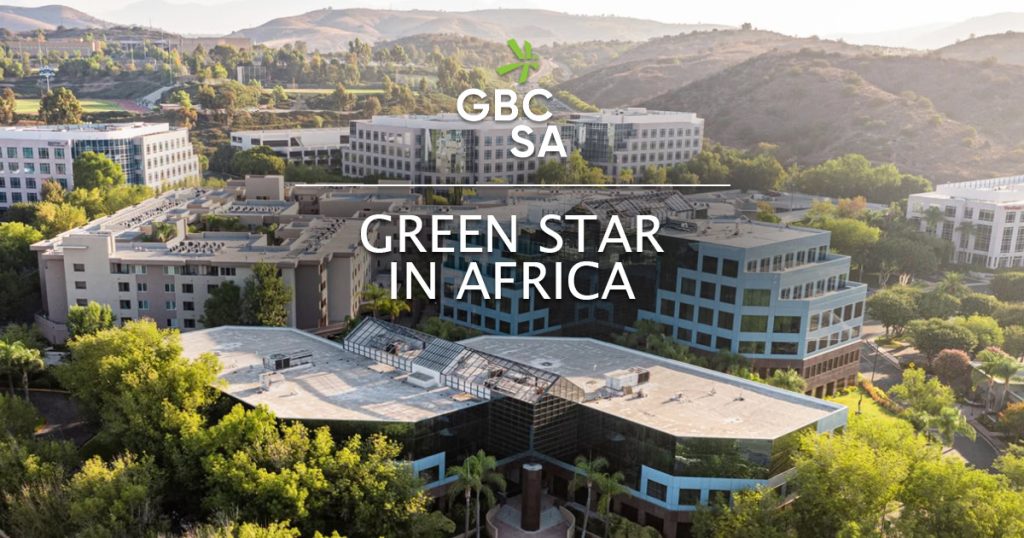
1. The Rise of Certified Green Projects
Certification systems like EDGE, LEED, and Green Star Africa are spreading quickly across the continent. These frameworks encourage measurable sustainability targets and attract international investors.
- Africa now has more than 1,000 certified green buildings, representing 14.3 million square meters of sustainable space (JLL).
- Over 8.8 million square meters are EDGE-certified, showing Africa’s growing participation in global green standards (EDGE Buildings).
- 12 national Green Building Councils now operate across Africa, promoting local regulations and training programs.
This growing certification ecosystem improves construction quality and builds investor confidence.
2. Digital and Smart Construction Technologies
Digital innovation is transforming the building industry. Developers are using smart tools to design, monitor, and manage sustainable structures more efficiently.
Examples include:
- Building Information Modeling (BIM): allows teams to simulate building performance and reduce waste before construction begins.
- IoT sensors: monitor energy use, air quality, and temperature in real time.
- Smart grids and automation: optimize lighting, heating, and cooling for energy efficiency.
As smart technologies become more affordable, they are helping green building Africa initiatives deliver long-term energy savings.
3. Focus on Climate Resilience
Climate change is already affecting many African cities. Rising temperatures, floods, and coastal erosion are reshaping how buildings must be designed.
Developers are now emphasizing resilient design, including:
- Elevated foundations and flood-resistant structures
- Heat-reflective materials and natural ventilation
- Green roofs and urban vegetation for cooling
The World Bank notes that improved building codes are essential to ensure safe, inclusive, and climate-resilient urban environments (World Bank). By integrating resilience into every project, developers protect both lives and investments.
4. Green Financing and Public-Private Partnerships
Financial institutions are recognizing the long-term benefits of sustainability. New partnerships are forming between governments, banks, and private developers to fund eco-friendly projects.
These initiatives include:
- Green bonds and climate funds for energy-efficient housing
- ESG-focused investment portfolios targeting sustainable infrastructure
- Government incentives for projects meeting carbon reduction targets
These collaborations make it easier for builders to pursue green certifications and adopt eco-conscious designs at scale.
5. The Future: Net-Zero and Regenerative Design
The next frontier of green building goes beyond minimizing harm; it aims to create positive environmental impact. The concept of net-zero carbon buildings is growing across Africa.
Regenerative design includes:
- On-site renewable energy systems
- Water recycling and storage
- Materials that capture rather than emit carbon
This vision aligns with Africa’s goal to build cities that are self-sufficient, adaptive, and supportive of human health and environmental balance.
What Construction Companies and Developers Should Do
With sustainability becoming central to modern infrastructure, developers need clear action steps. The following strategies outline how builders can align their projects with the principles of green building in Africa and deliver measurable impact.
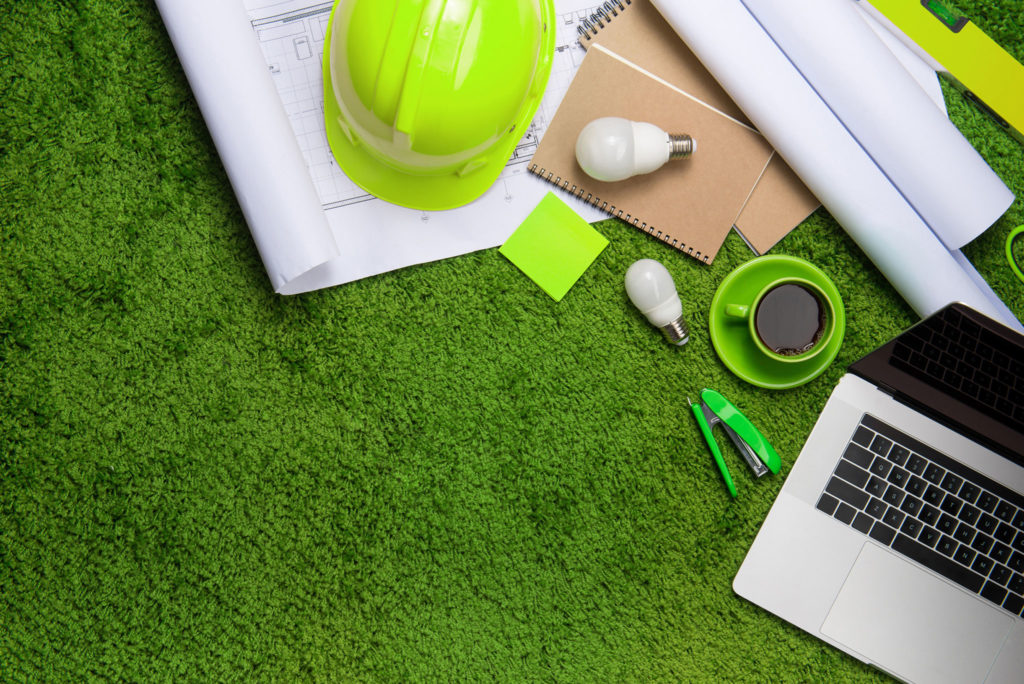
1. Integrate Sustainability from the Start
Green success begins during the planning phase. Companies should:
- Conduct environmental impact assessments before construction.
- Choose sites that minimize disruption to ecosystems.
- Design buildings that take advantage of natural light and ventilation.
- Set measurable sustainability targets early, such as achieving LEED or EDGE certification.
Planning with sustainability in mind reduces redesign costs later and ensures better long-term performance.
2. Prioritize Sustainable Materials and Supply Chains
Selecting the right materials is essential for reducing a project’s carbon footprint. Builders should:
- Source locally produced materials to support community economies and reduce transport emissions.
- Verify suppliers with sustainability certifications.
- Favor recycled, reclaimed, or renewable materials wherever possible.
The green materials market in Africa is expanding rapidly, projected to reach nearly USD 27 billion by 2030 (Grand View Research).
3. Train and Upskill the Workforce
A major challenge across Africa is the shortage of trained green construction professionals. Developers should invest in workforce education through:
- On-site sustainability training programs
- Partnerships with Green Building Councils
- Certification workshops for architects and engineers
According to Reuters, Africa currently receives only 3 percent of global clean energy funding, highlighting the need for stronger local skills and investment (Reuters).
4. Embrace Energy and Water Efficiency Technologies
Efficiency technologies provide some of the fastest returns on investment. Developers can install:
- Solar photovoltaic panels and heat pumps
- Smart thermostats and lighting systems
- Low-flow plumbing fixtures and rainwater collection systems
These measures can cut operational costs and qualify projects for green financing programs.
5. Pursue Green Certifications and Transparency
Certifications such as LEED, EDGE, or Green Star Africa verify a building’s sustainability performance. These frameworks improve market credibility and attract high-value investors.
For example, South Africa’s voluntary green certification systems cover nearly 7 percent of all new commercial space (EDGE Buildings). Publicly tracking energy and water data further increases accountability and supports government policy development.
6. Design for Resilience and Long-Term Value
Finally, developers must think beyond the construction phase. Resilient buildings maintain their performance over time and protect occupants against environmental risks.
Long-term value can be achieved through:
- Regular maintenance and building performance audits
- Retrofitting old structures with new sustainable systems
- Flexible layouts that adapt to future technologies and needs
Sustainability is not just a design choice; it is a long-term investment that defines modern development success.
Spotlight on the Chagoury Group’s Approach to Eco-Friendly Construction
Now that we have explored how green building in Africa is evolving, it is important to highlight developers who are putting these principles into practice. Among them, the Chagoury Group stands out for its focus on sustainability and large-scale infrastructure that supports community resilience.
Sustainable Urban Vision: Eko Atlantic City
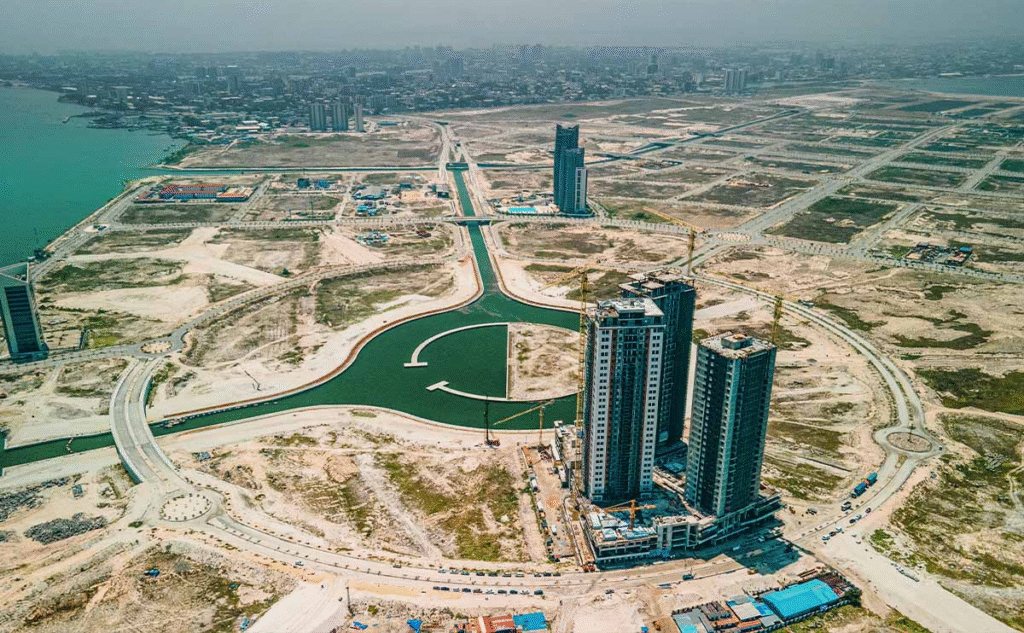
The Chagoury Group’s flagship project, Eko Atlantic City, represents one of the most ambitious examples of sustainable urban planning in West Africa. Built on land reclaimed from the Atlantic Ocean, the development serves as both a residential and business hub designed to withstand rising sea levels and coastal erosion.
Key sustainability features include:
- A shoreline protection system made of eco-engineered revetments that prevent flooding while preserving natural habitats (Chagoury Group Construction)
- Energy-efficient utilities and infrastructure designed to reduce carbon emissions
- Use of locally sourced materials to minimize transportation impacts
- Integration of modern drainage and water-recycling systems for environmental balance
These measures make Eko Atlantic City not only a commercial success but also a model for climate-resilient development across the continent.
Sustainability in Design and Construction
Beyond large-scale projects, the Chagoury Group integrates green practices into its broader construction operations. The company emphasizes:
- Energy-efficient design standards in residential and mixed-use buildings
- Incorporation of solar energy solutions to reduce reliance on grid power
- Use of LED lighting, sustainable finishes, and high-efficiency materials
- Collaboration with environmental engineers to ensure all projects meet regulatory and ecological benchmarks
These practices align with the principles promoted by organizations like the World Green Building Council, showing how private developers can drive measurable progress in eco-friendly construction.
Building for Resilience and Community Impact
The Chagoury Group’s environmental efforts extend beyond construction. The company invests in projects that strengthen community infrastructure, such as hospitals, schools, and coastal defenses. These initiatives reflect a deep understanding that sustainability is about more than buildings; it is about people, safety, and shared prosperity.
By combining innovation, long-term planning, and environmental awareness, the Chagoury Group continues to prove that sustainable construction can lead Africa’s urban future while delivering social and economic value.
Gilbert Chagoury: Building a Sustainable Future for Africa
The journey toward sustainability is no longer optional. Every building constructed today will shape how African cities perform for generations to come. Through innovation, design, and collaboration, green building in Africa is transforming from a niche idea into the foundation of a cleaner, more resilient continent.
For governments and developers, the path forward is clear. Adopting eco-friendly practices improves efficiency, creates jobs, and strengthens economies. As more cities implement energy-saving codes and certification systems, Africa has the opportunity to lead a global shift toward sustainable urban living. The evidence is already visible in successful projects like Eko Atlantic City, where development meets resilience.
At Chagoury Group, sustainability remains central to every vision for growth. The company, under the supervision of Gilbert Chagoury, continues to design and build with responsibility, ensuring that every project supports both environmental balance and community progress. To learn more about ongoing green initiatives or to discuss partnerships in sustainable infrastructure, visit our Contact page and join the effort to build Africa’s sustainable future.
